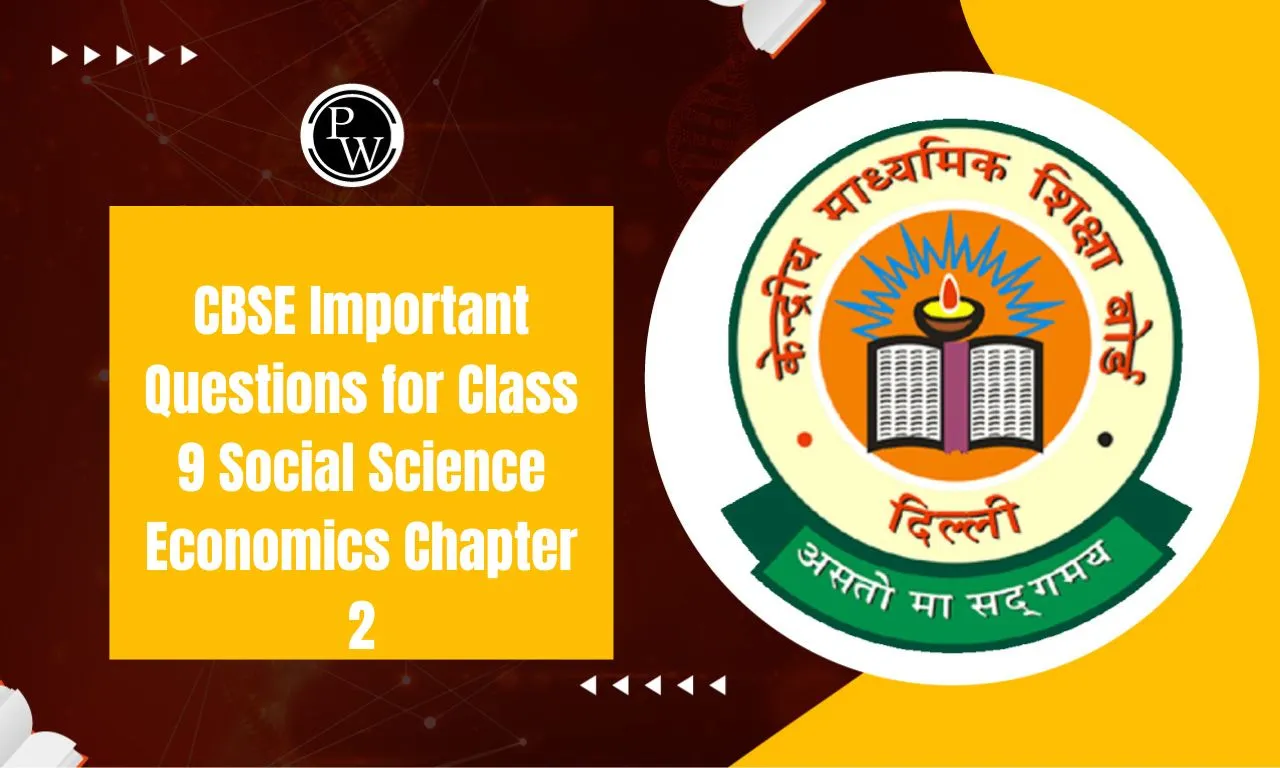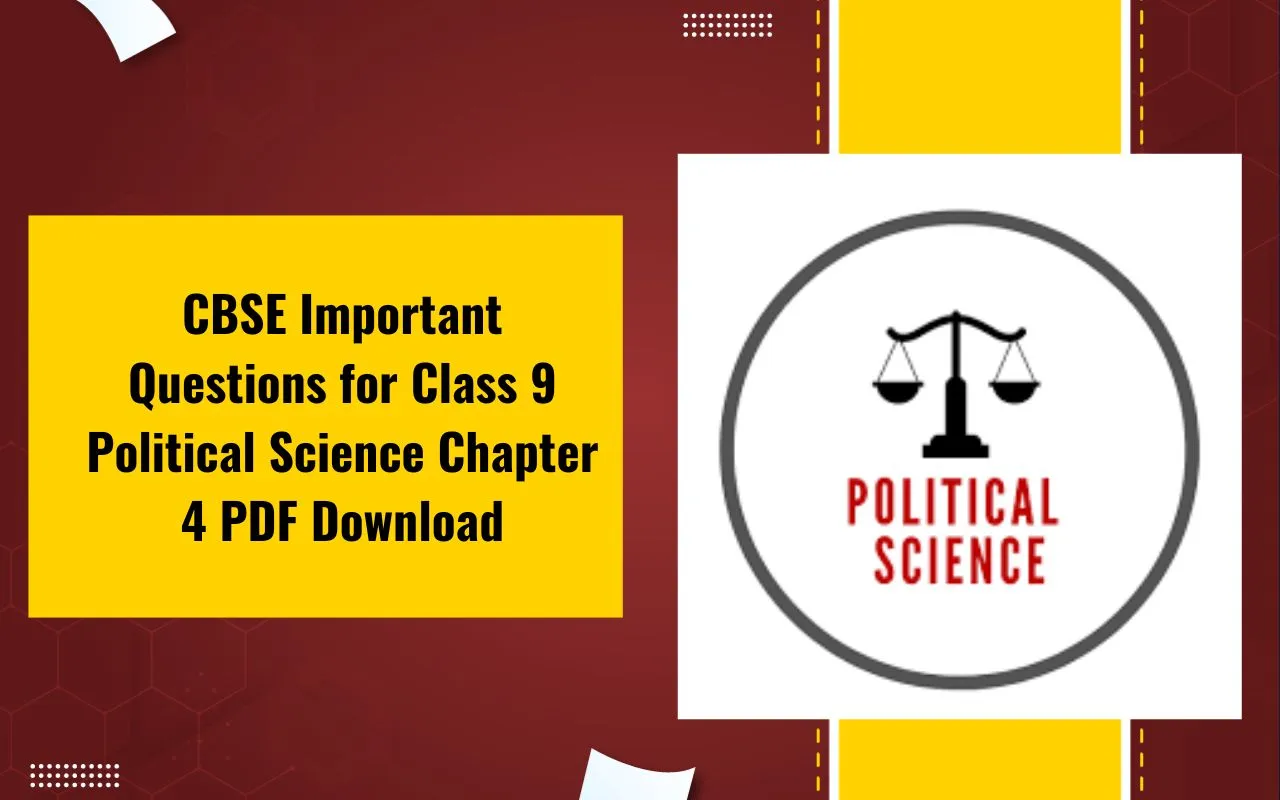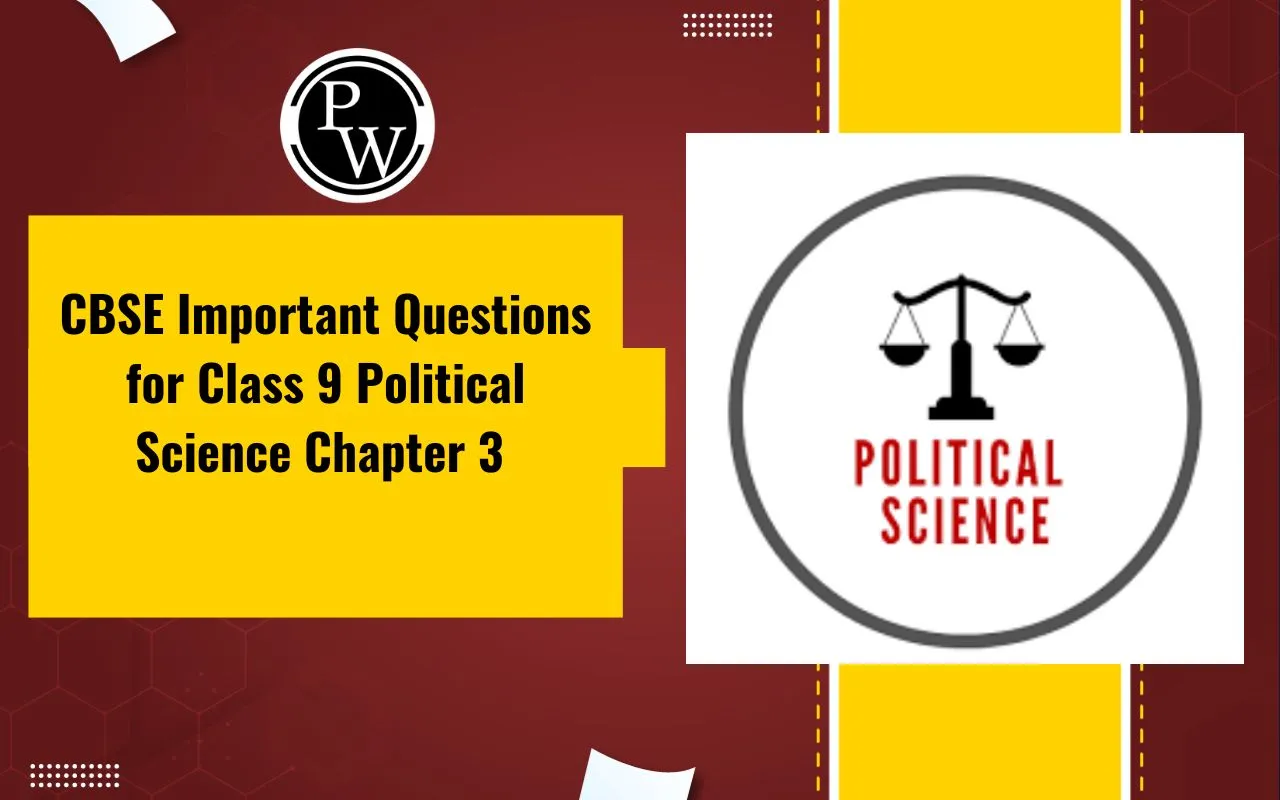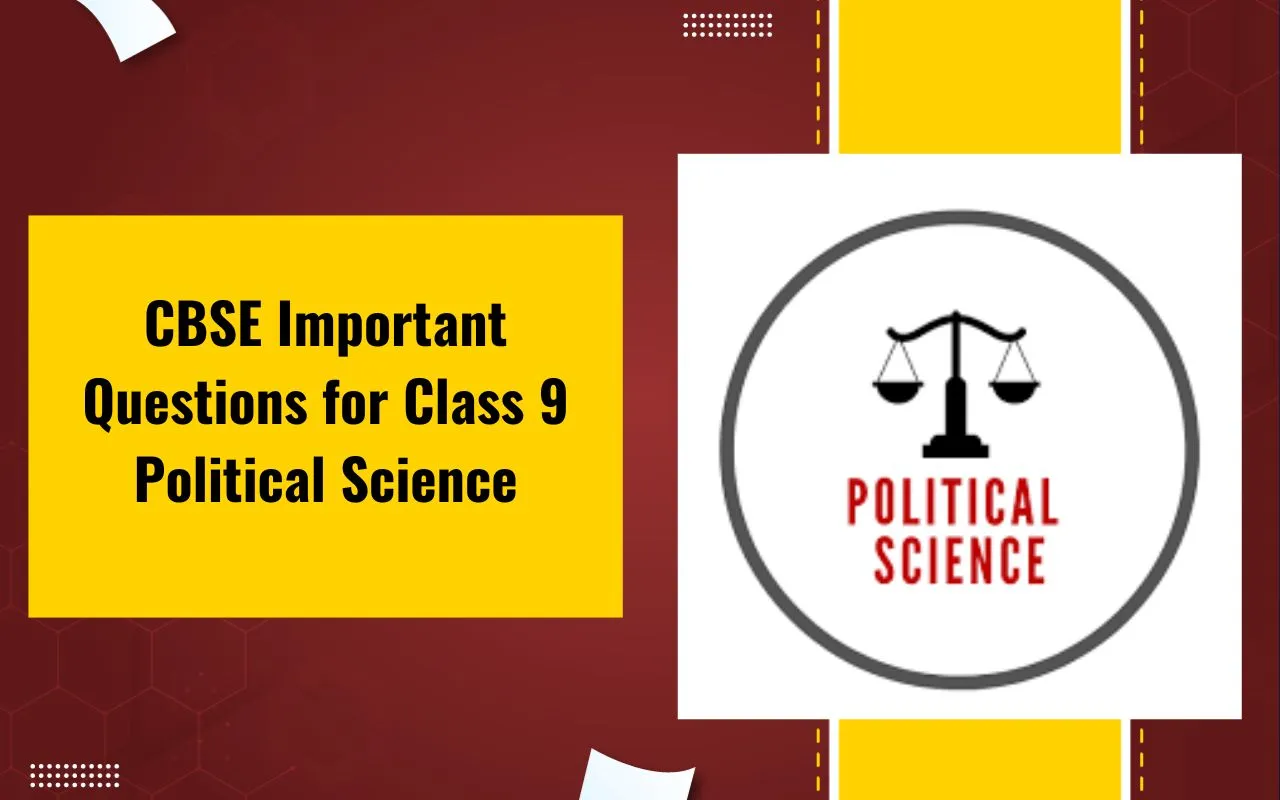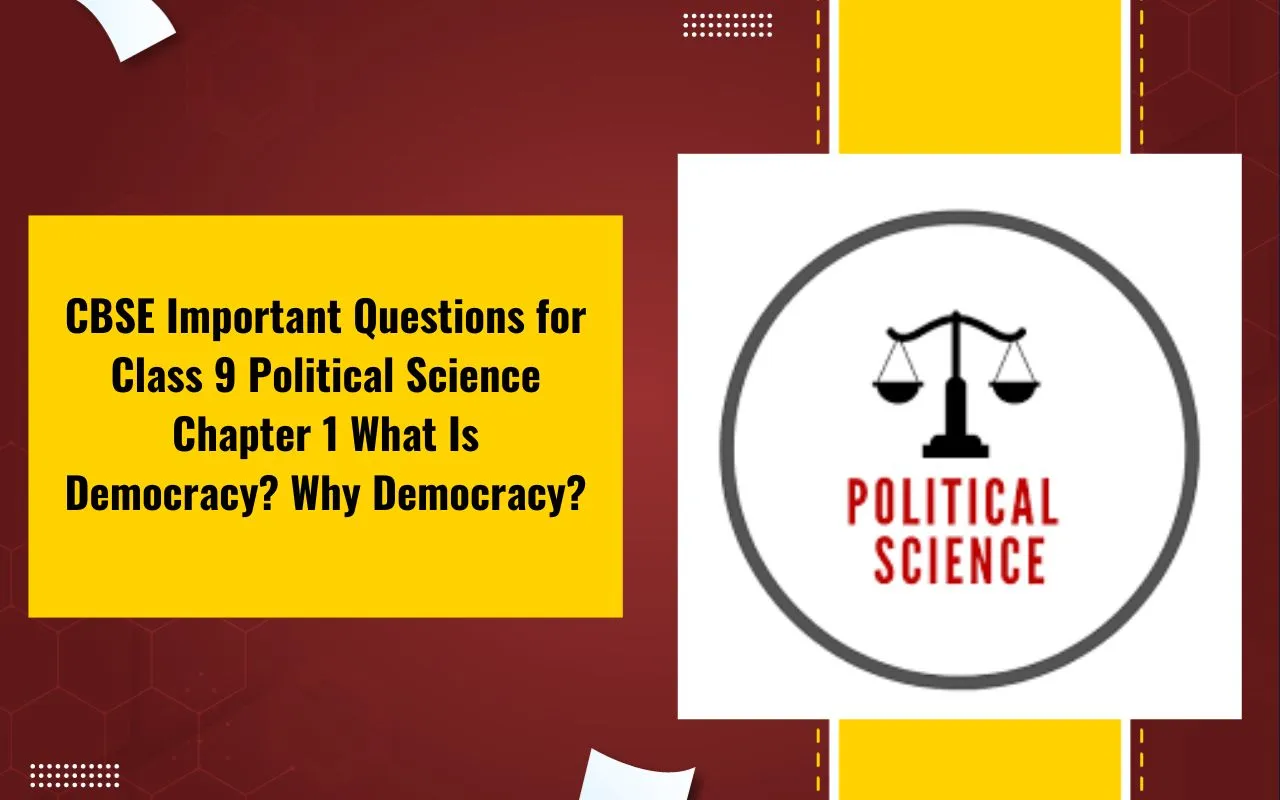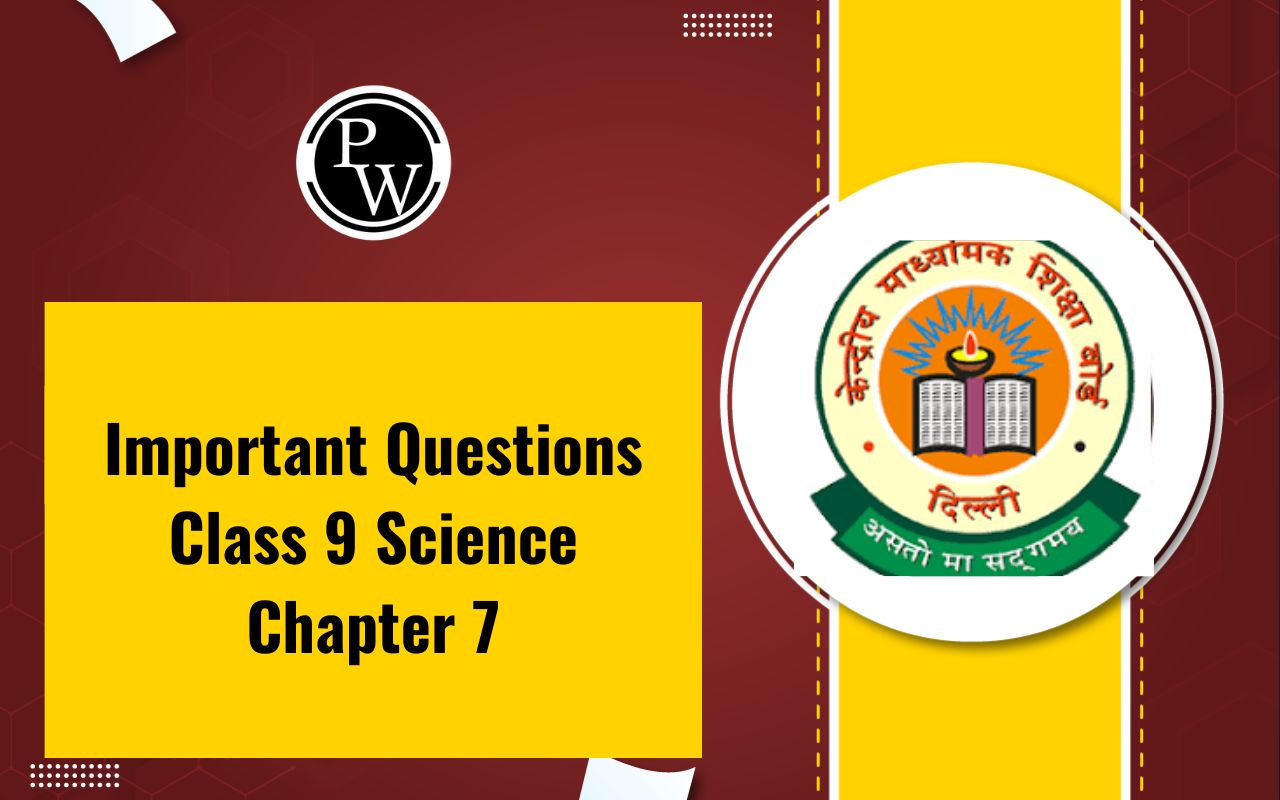

CBSE Important Questions for Class 9 Social Science Economics Chapter 2: Chapter 2 of Class 9 Social Science (Economics), People as Resource, explains how the population can be an asset rather than a burden when properly educated, skilled, and healthy. It discusses the role of human capital in economic development, emphasizing education, healthcare, and employment.
The chapter contrasts economic activities into primary, secondary, and tertiary sectors and highlights the importance of literacy and health in improving productivity. Key questions often focus on the impact of education, unemployment types, and the difference between human capital and physical capital. Understanding these concepts helps students relate population growth to national development and economic progress.
CBSE Important Questions for Class 9 Social Science Economics Chapter 2 Overview
Chapter 2 of Class 9 Social Science (Economics), People as Resource, highlights how a nation’s population can contribute to economic growth when provided with education, healthcare, and employment opportunities.
It explains human capital formation, the role of different economic sectors, and the impact of unemployment. Understanding these concepts is crucial for recognizing the significance of investment in human resources for a country’s progress. These questions will help students grasp key topics, prepare effectively for exams, and connect economic theories to real-life situations, improving their analytical and problem-solving skills.
CBSE Important Questions for Class 9 Social Science Economics Chapter 2 PDF
Chapter 2 of Class 9 Social Science (Economics), People as Resource, explains how education, healthcare, and employment contribute to economic growth by transforming the population into an asset. It highlights human capital formation, economic activities, and unemployment types. Below, we have provided a PDF containing important questions for this chapter. These questions will help students understand key concepts, practice effectively, and prepare well for their exams.
CBSE Important Questions for Class 9 Social Science Economics Chapter 2 PDF
CBSE Important Questions for Class 9 Social Science Economics Chapter 2 People as Resource
Below are the CBSE Important Questions for Class 9 Social Science Economics Chapter 2 People as Resource -
1. Disguised unemployment occurs when the number of persons working on a farm is
(A) only what is required
(B) more than required
(C) less than required
(D) None of the above
Ans. (B) more than required
2. Which of the following is an economic activity?
(A) A teacher teaching his son
(B) Recitation among friends
(C) Teacher teaching in the classroom
(D) All of the above
Ans. (C) Teacher teaching in the classroom
3. Secondary sector includes:
(A) Manufacturing
(B) Forestry
(C) Trade
(D) Quarrying
Ans. (A) Manufacturing
4. What is the major aim of Sarva Siksha Abhiyan?
(A) To provide elementary education to women
(B) To provide elementary education to the rural poor
(C) To provide elementary education to all children in the age group 6-14 years
(D) To provide elementary education to the urban poor
Ans. (C) To provide elementary education to all children in the age group 6-14 years
5. Disguised unemployment could be traced in:
(A) mining activity (B) service sector
(C) agriculture (D) social forestry
Ans. (C) agriculture
6. Why are rural women employed in low-paid jobs?
(A) They do not need to work in high-paid jobs
(B) They lack in education or the necessary skill
(C) They are not allowed by their families to do high paid jobs
(D) They are not aware of the wage structure
Ans. (B) They lack in education or the necessary skill
7. Which of the following is a significant step towards providing elementary education to all the children in the age group of 6-14 years?
(A) Sarv Shiksha Abhiyan
(B) Mid-day meal
(C) Navodaya Vidyalaya
(D) Sainik School
Ans. (A) Sarv Shiksha Abhiyan
8. What does investment in human capital primarily involve?
(A) Building factories
(B) Buying equipment
(C) Developing skills and knowledge
(D) Purchasing land
Ans. (C) Developing skills and knowledge
9. Which of the following is NOT a factor affecting human resource development?
(A) Education (B) Health
(C) Climate (D) Poverty
Ans. (C) Climate
10. What does the literacy rate primarily indicate?
(A) Economic development
(B) Social development
(C) Political development
(D) Technological development
Ans. (B) Social development
11. For better economic growth, which investments in human resources should be done, either in modern technology, in healthcare and education, in food and drink or in transportation?
Sol. Only healthcare and education relate completely to human resources and so investment in this should be done for better economic growth.
12. Which sector of the Indian economy absorbs the maximum labour?
Sol. Agriculture is the most labour absorbing sector of the economy.
13. What is the major reason for education having an important role in human capital formation?
Sol. Education broadens the knowledge of people and provides them training, thus having an important role in human capital formation.
14. Which person out of a farm labourer, a construction worker and a miner is having seasonal employment?
Sol. Miners and construction workers normally work in all seasons. Only a farm labourer will work for some part of the year and thus is having seasonal employment.
15. What do you understand by the term ‘human resource’?
Sol. Human resource is the term used for people who constitute work force for an organisation or country by their existing productive skills and abilities.
16. How does investment in human resource give higher return in future?
Sol. Investment in human resource (through education,training, medical care) yields higher return just like investment in land and capital.
This can be seen directly in the form of higher incomes earned because of higher productivity of the more educated or the better trained persons, as well as the higher productivity of healthier people. Not only do the more educated and the healthier people gain through higher incomes, society also gains in other indirect ways because the advantages of a more educated or a healthier population spreads to those also who themselves were not directly educated or given health care. Countries like Japan have become rich and developed without any natural resources because they have invested in human resource.
17. What are the various activities undertaken in the Primary sector, Secondary sector and Tertiary sector?
Sol. Primary Sector Activities Agriculture, forestry, animal husbandry, fishing, poultry farming and mining. Secondary Sector Activities Manufacturing and construction. Tertiary Sector
Activities Trade, transport, communication, banking, education, health, tourism, services and insurance.
18. What is the difference between disguised unemployment and seasonal unemployment?
Sol. Disguised unemployment and seasonal unemployment are both types of
underemployment, but they occur under different circumstances:
Disguised Unemployment:
• Disguised unemployment refers to a situation where more people are engaged in a task or occupation than are actually needed.
• In disguised unemployment, the productivity of each worker is so low that removing one or more workers would not affect overall output.
This type of unemployment is often found in traditional agricultural economies where the majority of the workforce is engaged in farming.
Seasonal Unemployment:
• Seasonal unemployment occurs when certain industries or occupations experience fluctuations in demand for labor based on seasonal variations.
• It is linked to changes in weather, holidays, or other predictable factors that affect demand for goods and services.
• Industries such as tourism, agriculture, retail (during holiday seasons), and construction often experience seasonal fluctuations in demand for labor.
Benefits of Using CBSE Important Questions for Class 9 Social Science Economics Chapter 2
- Enhances Concept Clarity – Helps students understand key ideas like human capital formation, economic activities, and the impact of unemployment.
- Exam-Focused Preparation – Covers important topics frequently asked in exams, ensuring better scoring opportunities.
- Improves Analytical Skills – Encourages students to think critically about the role of education, healthcare, and employment in economic development.
- Time Management – Regular practice helps students improve speed and accuracy in answering exam questions.
- Better Retention – Repeated exposure to important questions strengthens memory and understanding of key topics.
- Boosts Confidence – Familiarity with likely exam questions reduces stress and enhances performance in assessments.
CBSE Important Questions for Class 9 Social Science Economics Chapter 2 FAQ
Why do we need people as resource?
How can people be used as a resource?
What is the role of education in people as resources?

